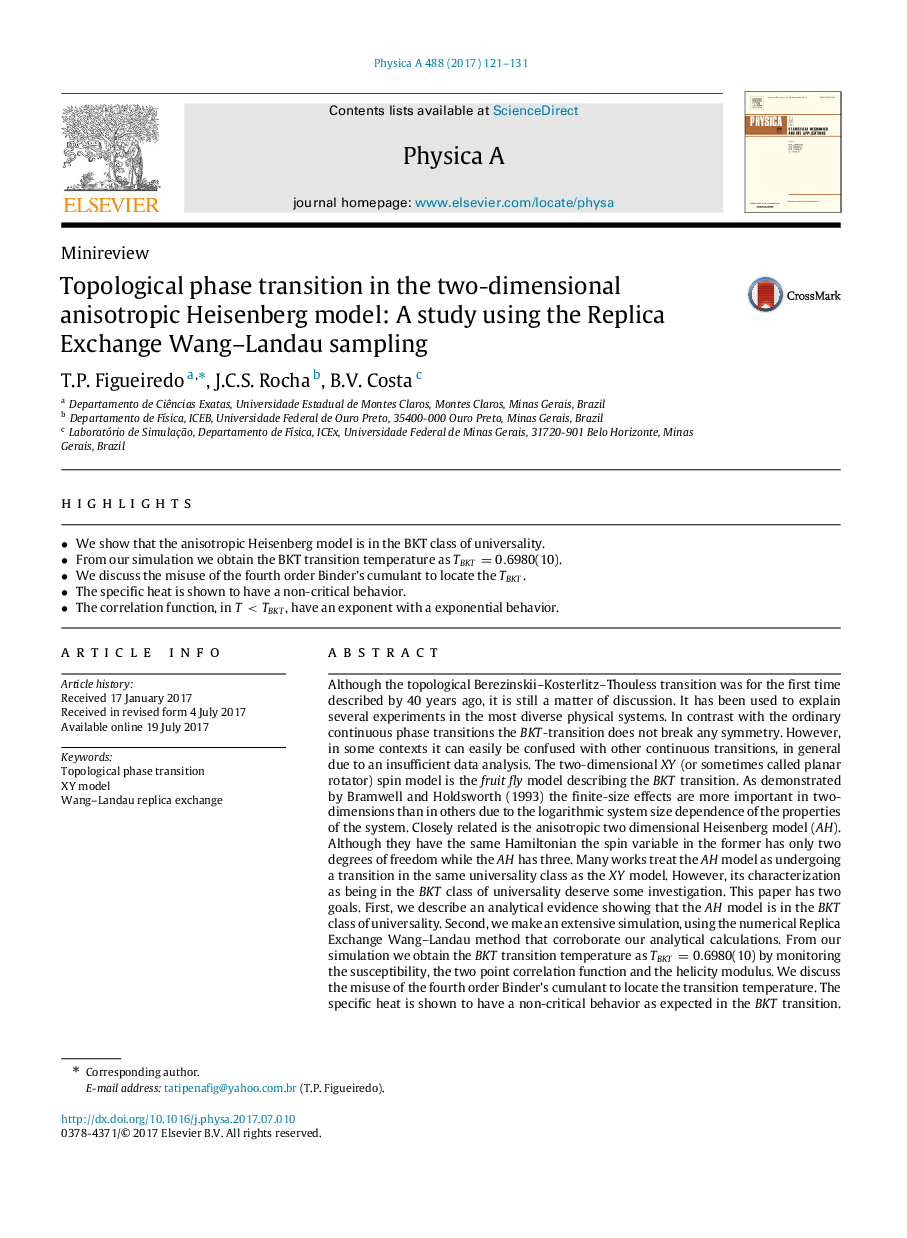| کد مقاله | کد نشریه | سال انتشار | مقاله انگلیسی | نسخه تمام متن |
|---|---|---|---|---|
| 5102526 | 1480085 | 2017 | 11 صفحه PDF | دانلود رایگان |
عنوان انگلیسی مقاله ISI
Topological phase transition in the two-dimensional anisotropic Heisenberg model: A study using the Replica Exchange Wang-Landau sampling
دانلود مقاله + سفارش ترجمه
دانلود مقاله ISI انگلیسی
رایگان برای ایرانیان
موضوعات مرتبط
مهندسی و علوم پایه
ریاضیات
فیزیک ریاضی
پیش نمایش صفحه اول مقاله

چکیده انگلیسی
Although the topological Berezinskii-Kosterlitz-Thouless transition was for the first time described by 40 years ago, it is still a matter of discussion. It has been used to explain several experiments in the most diverse physical systems. In contrast with the ordinary continuous phase transitions the BKT-transition does not break any symmetry. However, in some contexts it can easily be confused with other continuous transitions, in general due to an insufficient data analysis. The two-dimensional XY (or sometimes called planar rotator) spin model is the fruit fly model describing the BKT transition. As demonstrated by Bramwell and Holdsworth (1993) the finite-size effects are more important in two-dimensions than in others due to the logarithmic system size dependence of the properties of the system. Closely related is the anisotropic two dimensional Heisenberg model (AH). Although they have the same Hamiltonian the spin variable in the former has only two degrees of freedom while the AH has three. Many works treat the AH model as undergoing a transition in the same universality class as the XY model. However, its characterization as being in the BKT class of universality deserve some investigation. This paper has two goals. First, we describe an analytical evidence showing that the AH model is in the BKT class of universality. Second, we make an extensive simulation, using the numerical Replica Exchange Wang-Landau method that corroborate our analytical calculations. From our simulation we obtain the BKT transition temperature as TBKT=0.6980(10) by monitoring the susceptibility, the two point correlation function and the helicity modulus. We discuss the misuse of the fourth order Binder's cumulant to locate the transition temperature. The specific heat is shown to have a non-critical behavior as expected in the BKT transition. An analysis of the two point correlation function at low temperature, C(r)ârâη(T), shows that the exponent, η, is consistent with an exponential law η=η0eζT, with η0=0.025(5) and ζ=3.25(10) in close agreement with the results of Cardy (1981) for the p-state clock model.
ناشر
Database: Elsevier - ScienceDirect (ساینس دایرکت)
Journal: Physica A: Statistical Mechanics and its Applications - Volume 488, 15 December 2017, Pages 121-131
Journal: Physica A: Statistical Mechanics and its Applications - Volume 488, 15 December 2017, Pages 121-131
نویسندگان
T.P. Figueiredo, J.C.S. Rocha, B.V. Costa,